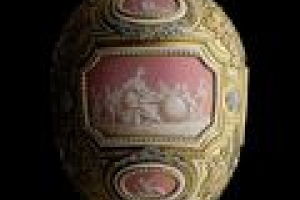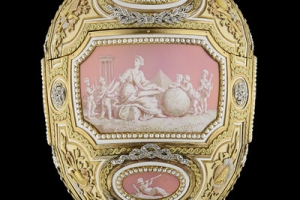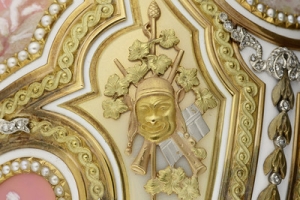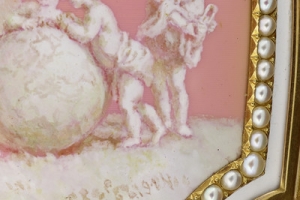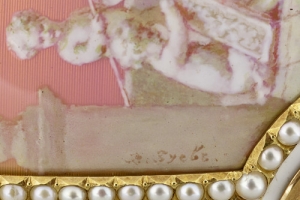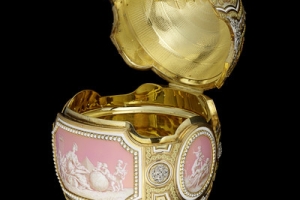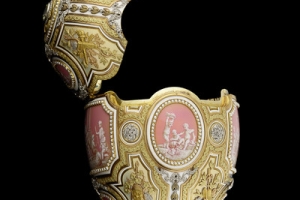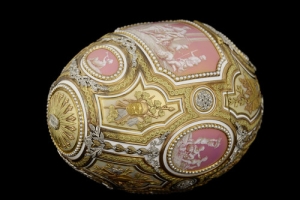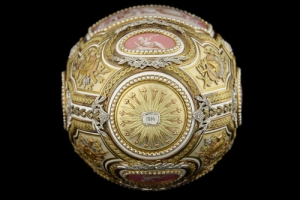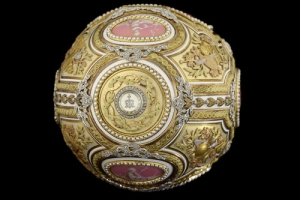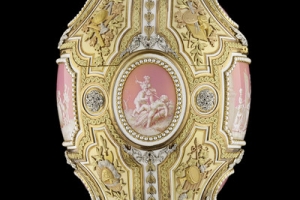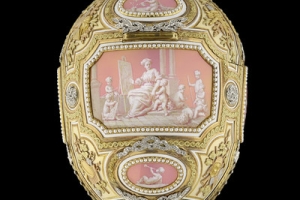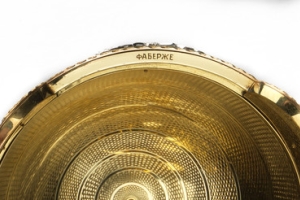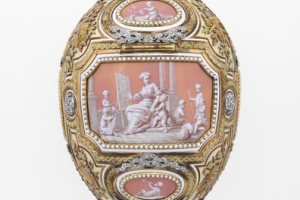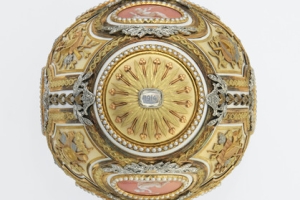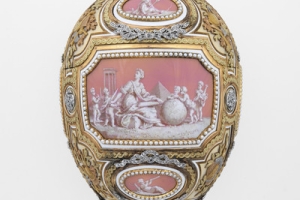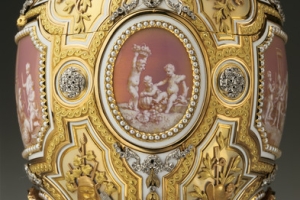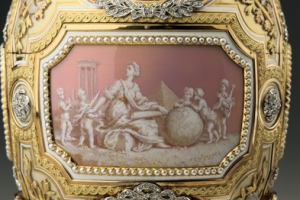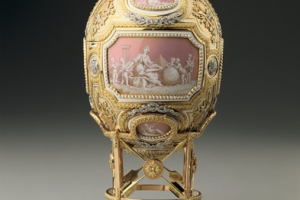CATHERINE THE GREAT EASTER EGG
Creator(s): Fabergé (Firm) , Henrik Immanuel Wigström (Workmaster) , Vasilii Ivanovich Zuev (Miniaturist)
On view in: Icon Room
About this object
Henrik Wigström, Fabergé's last head workmaster, created this egg for Nicholas II to present to his mother, Maria Fedorovna, on Easter morning in 1914. Vasilii Zuev, a designer employed by the Fabergé firm, painted the monochrome en camaïeu pink enamel panels with miniature allegorical scenes of the arts and sciences after French artist François Boucher. According to a letter from Maria Fedorovna to her sister, Queen Alexandra of England, the surprise in this egg was a mechanical sedan chair, carried by two blackamoors, with Catherine the Great seated inside (it has now been lost). To feature Catherine the Great, who prided herself on being a patron of the arts and sciences, as part of the surprise is certainly in keeping with this elaborate egg's style and imagery.
Egg is in the Louis XVI style in four-color gold, engraved, set with tiny diamonds and pearls. Eight monochrome en camaïeu enamel paintings on pink opalescent enamel panels are the primary decoration. The allegorical scenes of the arts and sciences in the style of French painter François Boucher were painted by Vasilii Zuev. Smaller enameled ovals featuring putti with attributes of the seasons appear above, below, and to the sides of the larger plaques. Enamels, rectangular and oval, have a row of pearls in the inner side of the frames and a line of white opaque enamel outside the pearls. Oval enamels have additional outer frames in two-color gold with bowknots at top and sprays of leaves at the bottom, all in tiny diamonds. There are approximately 937 diamonds and 500 pearls. Between these enamels are panels of white and gold opalescent enamel attached are allegorical trophies in four color gold set against foliage, generally laurel, oak, or grape leaves. The initials of Maria Fedorovna in Cyrillic appear under a table diamond at the top and the year 1914 is found under a similar diamond at the bottom. Interior was made to hold a surprise that is now lost. Inside of cover is engraved with a guilloche pattern basket pattern in concentric circles. Base in four color gold made in 1940 has four legs ending in lion's feet and crossed arrows joining legs to each other. The original stand is missing.
- Object name:
- CATHERINE THE GREAT EASTER EGG
- Made from:
- Gold -- diamonds -- pearls -- enamel -- silver -- platinum -- mirror
- Made in:
- Saint Petersburg, Russia
- Date made:
- 1914
- Size:
- 4 3/4 in. (12.1 cm)
Detailed information for this item
- Catalog number:
- 11.81.1-2
- Class:
- GOLD
- Signature marks:
- MARK: FABERZHE [Inside edge of upper portion, In Cyrillic, all caps] MARK: [illegible] [Stamped in a circle inside lower lip (left), bottom half of egg] MARK: [illegible] [Stamped in circle inside lower lip (center), bottom half of egg] MARK: [illegible] [Stamped in circle inside lower lip (right), bottom half of egg] SIGNATURE: Zuev 1914 g. [Bottom right corner of 8-sided enamel panel depicting the Arts Translation: Zuev, 1914] SIGNATURE: V. Zuev" [handwritten in Cyrillic] [On column at left on 8-sided panel depicting the Sciences Trans: V. Zuev] DATE: 1914 [In black on mirror under diamond on bottom exterior] INITALS: MF [In Slavonic interlace] [In black on mirror under diamond on top, exterior. Initials are those of Maria Fedorovna, recipient of the Easter gift]
- Credit line:
- Bequest of Marjorie Merriweather Post, 1973

